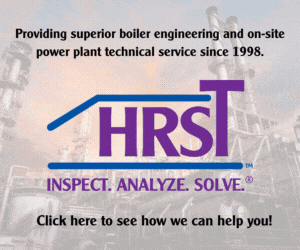
Takeaways from safety roundtables:
- Populate your plant safety committee with motivated personnel and use corporate guidelines to ensure job safety.
- Excavations frequently are required at relatively new sites for fixing underground infrastructure. Proper barriers for personnel protection are particularly important. Know where to dig, how to dig, and how to refill to prevent collapse.
- Conduct a 10- to 15-min safety meeting before start of work and at end of day. In the morning, review what could happen given the planned activities; in the afternoon, what did happen. Make discussion topics germane to the work scheduled for the next couple of days.
- Attendees expressed concern about different procedures at different plants, particularly when changes in ownership occur. Procedures are not one-size-fits-all and unless carefully thought through can take control out of the hands of those who know the most.
- Maintain a no-blame culture. If something doesn’t seem right, ask questions. After an incident, all plant supervisors and personnel should ask themselves, “What could I have done to prevent the problem from occurring?”
- Virtually every plant acknowledges that it has a “good” safety program, according to a poll of attendees. But the challenge is to make it better. Remember that complete paperwork doesn’t mean the work is being done safely.
- Contract safety personnel on patrol is money well spent. These folks typically are good at “coaching,” not criticizing.
- Consider implementing a “good catch” program to keep concerns in front of the group until they are corrected.
- Annual air-quality-management and respirator training are recommended for all plant personnel.
Bearing problem? Nah, it was a lube-oil temperature problem.
The details: Collector bearing vibrations on one gas turbine suddenly increased to more than 6 mils. Bearing area was inspected; there were no obvious findings. Vibrations reappeared daily soon after GT restart. Corporate engineering was consulted. Vibrations reached a high of 7.7 mils, but with a trip setting of 8.5 there were concerns.
Was collector compartment temperature a cause? A portable a/c unit was installed, but the problem remained. Was something in the generator causing the problem? Nothing obvious based on a thorough inspection.
One day vibration was not a problem: Weather was cool and wet—an “ah-ha” moment. Put two lube-oil coolers in parallel to reduce oil temperature and the problem disappeared.
Staff found cooling-water temperature was higher than normal because of several failed spray nozzles in the tower; also, the collector bearing was lightly loaded. Nozzles replaced and bearing loading corrected, the unit returned to normal operation with one lube-oil cooler in service.
A two-decade operating history of high HRSG backpressure (BP) and derates for a 1 × 1 combined cycle provided valuable lessons learned. The plant, designed for baseload operation, was commissioned and soon pressed into cycling service for several years. Almost from the get-go, the HRSG experienced fouling by ammonia salts from the SCR and rust accumulation, most evident in the last tube sections. Result: A gas-turbine derate of 15 MW.
After years of monitoring pressures, trying online cleaning methods (sonic horns, vibrators on lower headers) and offline cleaning (dry ice, air jets, pressure wave), and dehumidifiers on the GT inlet and LP inlet to the HRSG, plant, beginning in 2008, resorted to adding stiffeners in the HRSG. Lower baffle plates were removed in the LP and IP sections and several different baffle configurations were tried to identify the most effective alternative. Also, SCR controls, and economizer recirculation temperature controls, were adjusted to increase the allowable BP from 28 to 30 in. H2O.
In the face of continued elevated BP in 2016, the facility pursued permanent modifications beginning in 2017 (through 2020) to increase allowable backpressure to 45 in. H2O and address other issues—such as tube leaks.
These included doubling the number of stiffening plates in the roof, floor, and walls; replacing the LP economizer, LP superheater No. 1, and LP evaporator tube bundles; and upgrading the expansion joints. Eleven tube rows in the LP economizer were replaced with 15 smaller-diameter tubes, creating a 20 in. cleaning lane between the LP economizer and the LP evaporator/superheater No. 1.
Pressure wave was by far the most effective cleaning method, being able to remove about five times as much debris as dry ice. The story may not be over, though. The unit has not been cleaned since 2020 and BP is beginning to rise again—even though the unit is now operating baseload.
Transition-piece steam pipe failure. During a local crawl-through inspection, plant personnel found a tube liberated from one transition piece. A full unit check found cracks in two more transition pipes in roughly the same place. Dye-pen inspections of the remaining TPs found no additional problems. Other users in attendance reported similar cracking.
RCA conclusion was that the dynamic frequency of the engine was close to the natural frequency of the transition piping. The OEM recommended increasing the exhaust temperature to create greater separation from the natural frequency of the transition piping. A logic change was made and no problems have been reported since.
Case study of a condenser event may well be one of the most valuable safety briefs you’ll receive if you have a combined-cycle plant with a fuel gas heater (FGH). An abridged account follows.
As a result of the failure of a main lead in the steam turbine/generator, the facility was in a steam-turbine outage in January 2022 during which the GTs remained “available” to the grid (with fuel at pressure up to the FGH stop valves). With the plant experiencing numerous issues with the FGH (for example, leaking gas isolation valves) and its leak-detection system (prone to false alarms), and other factors, natural gas found its way to the condenser via the IP water-side supply line (the source of heat for the FGH).
The plant was down for 10 days, but with cold weather in the forecast, the gas turbines were started to build up pressure to about 50 psig in the HRSG to prevent freezing. The steam pressure in the HRSG provided the motive force to move the gas that had been accumulating in the IP drum to flow down the steam piping to the condenser.
When a welder arrived to repair a 1-in. pipe connection on the outside of the condenser, the arc ignited the gas and the subsequent explosion blew out six rupture discs on top of the unit, caused bolting threads on the LP steam-turbine cover to fail, and damaged internal structural supports. Rupture-disc parts were found all over the plant site. The explosion was heard and felt throughout the plant.
No one was injured (not even the welder), no condenser tube leaks occurred, and the LP section of the turbine suffered no internal damage.
Recommendations to avoid a similar incident elsewhere, included the following:
- Eddy current test FGH tube bundles and perform leak testing at least every six years.
- Utilize more robust inserts when plugging tubes.
- Ease plant staff access to vent valving and instrumentation.
- Establish fleet standard critical preventive maintenance guidelines for FGH systems.
- Perform comprehensive FGH system design review.
- Install permanent redundant methane detectors on air ejectors with feedback to control system.
Plant has no vacuum pumps so steam pressure is required on a unit start to raise vacuum. Staff found the time required for a unit start creeping up and budgeted time for checking piping, drains, valves, etc, to find out where the leak was. One day it was not possible to get the vacuum low enough to roll the steamer. More leak checking required.
The gremlin was in the crossover pipe from the IP section to the LP. OEM’s plan was to remove the 60-in.-diam pipe and re-gasket both ends. Outage time required: Six days.
Alternative plan proposed by Furmanite America: Install scaffolding, remove insulation, remove crossover-pipe bolts and clean threads, lubricate threads, and reinstall. Plus, the steam-turbine/generator enclosure was modified to allow steam/hot air to escape and cool down that area, which got hotter as the unit ran. Bolts were so loose all the way around the pipe flanges, nuts could be removed by hand. Staff believes the bolts worked loose because of unit cycling.
The bottom line: Tough working environment, but the job was completed in two days at less than 20% of the OEM’s quote—including drilling required for Furmanite injection (and the Furmanite) and reinstallation of insulation.
Recommended PM: Check all bolts periodically, especially following a change in operating regimen. If you find two bolts loose on one flange, change the gasket as well as all the bolts. Same goes for flanges on GT bleed piping and air extraction lines.
Generator lead failure caused unit to trip from 42% load. All auxiliary power was lost; unit coasted down on dc lube and seal oil; generator hydrogen loss was significant; electrical testing revealed winding was grounded in all three phases. Significant damage—including melted copper and other debris—was found in the lead box.
Main lead T2 cleat was blown out during the event with carbon dust and debris (molten metal) falling into the generator. Carbon dust was distributed all over the generator by the hydrogen blower. Rotor was pulled for cleaning and full rewind.
The presenter said upgraded main leads, reflecting the realities of today’s operating paradigms, were installed. He recommended others consider doing the same on the advice of experts. It was his opinion that the original brazed joint failed because of years of cycling service.
This forced outage ran six months and cost $15 million. Ownership change and other upset conditions stopped work four times during the outage, which should have taken but 45 days. Speaker said it should take 14 24-hr days to change leads.
D11 bearing damage. MAD 11 bearing temperature on the steamer was running about 12 deg F higher than it had on the previous run. Unit was taken out of service and when coasting down experienced a lockout. It went to 0 rpm within 10 minutes and couldn’t go on turning gear. Bearing damage was suspected.
Unit was opened to access the aft bearing—a big job. Bearing was found wiped; drain holes were blocked so there was no lift oil. Bearing collar also was damaged and required a shop repair effort. MAD 12, a combined thrust/journal bearing, was checked as well. Varnish fouling was identified. Some of the thrust pads were damaged and replaced. Plus, the turning-gear overrunning clutch was damaged and repaired.
Analysis identified poor oil quality as a contributor to the problem. Oil from the sump was cleaned from 20/18/14 to 18/15/11. All bearings were inspected for damage and the pedestals checked for contamination and cleaned as necessary. Filters were replaced and all bearing lifts were reset after a high-velocity oil flush. Finally, all dead legs in the lube-oil piping system were eliminated.
NextGen CO emissions. Speaker’s experience was reflected in his “warning” to attendees that they should expect higher CO emissions on a cold start after implementing NextGen. He showed different rates of CO emissions during cold, warm, and hot starts and load changes. A slide showing old DLN emissions versus NextGen showed CO with NextGen was higher from 10 to 30 minutes after startup. By the 30-min hold point during a cold start the plant had consumed 40% of its CO allowance.
Experience with a kettle-boiler expansion-joint failure came next. With no replacement readily available a two-piece clamp was designed, installed, and filled with Furmanite. Staff had some concerns initially that this might restrict tube expansion in the boiler, but after five or six starts with the homemade fix everything seemed fine.
Useful Conference Links
- 501F and G users meet together—again (includes Monday highlights)
- 501F Users Group program for 2023
- 501G Users Group program for 2023
- 501F 2022 conference recap: User sessions
- 501F 2022 conference recap: Vendor presentations
- Excerpts from recent 501G plant reports
- Abstracts of recent 501G user presentations
- Remembering Steve Bates





